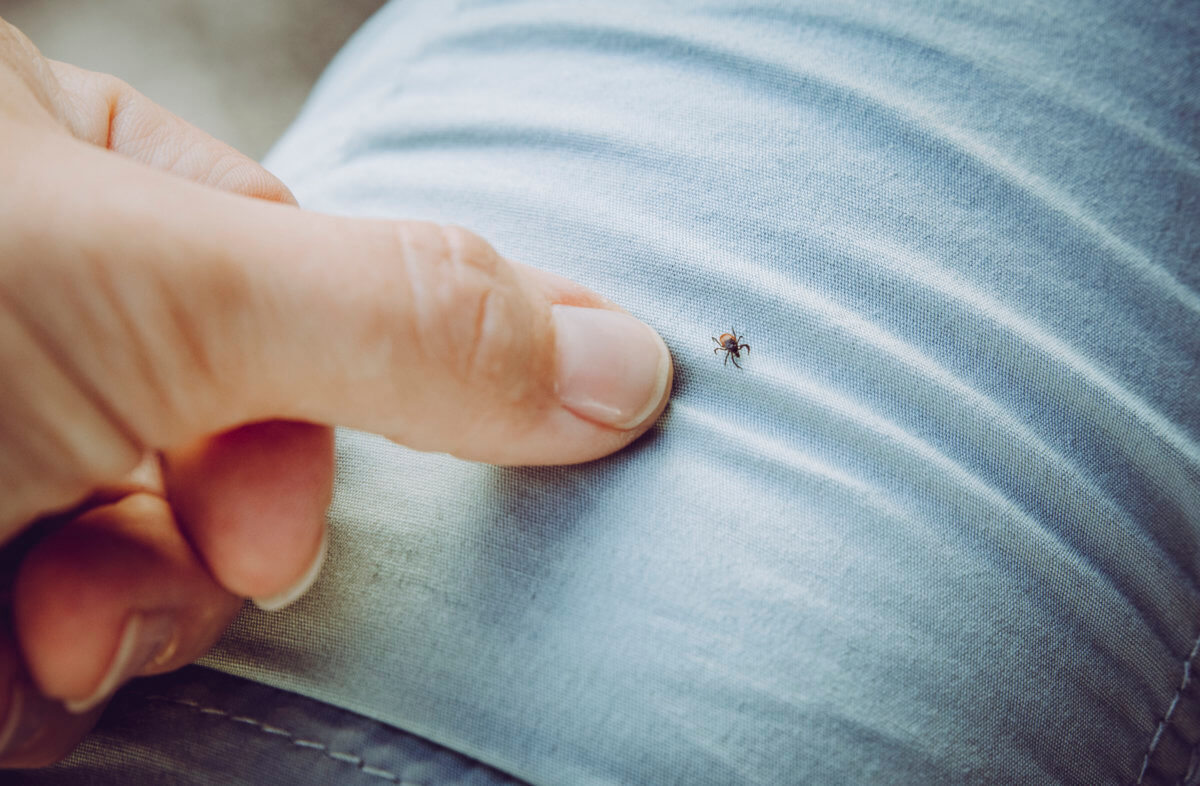BY DONNA DUARTE-LADD
While COVID-19 is still part of our everyday life, we also have to think about some of the ‘other’ concerns that come with summer. After being inside for the last four months, many New Yorkers are starting to indulge in day trips to woodsy areas or plan weekends upstate. This all makes perfect sense as a nature hike or summer away from the city is ideal for families when practicing social distancing. Yet as COVID-19 is still on the rise, we must keep in mind that Lyme disease has similarities to COVID-19 symptoms.
The reality is there are ticks, and tick prevention should be part of your daily summer routine, especially in rural areas and yes, especially during a pandemic. Here is a bit of a cheat sheet on where ticks are mostly found and prevention.
Why Ticks Prefer Shady Areas
Since ticks are extremely sensitive to heat, one is most likely to encounter them in shady rather than sunny areas – like playgrounds. Also, ticks seem to prefer leaf litter, also in dark areas. Since ticks do not fly or hop about, they are “brushed” on to peoples clothing when they walk through tall grass, says, Phillip J. Baker, Ph.D., executive director of the American Lyme Disease Foundation.
Organic Bug Spray or DEET Spray
DEET is the recommended product for use on skin. It has a long history and, when used as directed, is both effective and safe. Sprays containing permethrin (such as Repel) are for clothing. Although they are not harmful when applied to the skin, there is something in perspiration that de-activates it, thereby making it less effective. When used on clothing, it binds very tenaciously to fiber and will withstand several wash/dry cycles. Dr. Baker says, “One does not have to spray outdoor clothing daily. There are several organic insect repellants on the market. Some are effective, and others are not. I usually use DEET because I know it works and is safe.”
How to Do a Daily Tick Check
The CDC recommends that you first check yours and your children’s clothing as ticks may be attached. For any ticks on garments, remove and throw in the dryer for minutes on a high setting. You then need to do a body check. Do a full-body check on yourself as well as your children. The CDC recommends showering within two hours of coming indoors to help wash away any unattached ticks. A comprehensive guide to checking for ticks can be found here.
What to Do With the Tick
To remove a tick, use sharp tip tweezers and get as close to the skin as you grasp onto the tick. Pull the tick straight (upwards) out. You can either “squish” the tick in a tissue and then flush it down the toilet, or put the tick in a vial of alcohol that will kill it, says Dr. Baker.
Signs of Lyme Disease
It takes a certain amount of time for an infected tick to transmit Lyme disease to humans, says Dr. Baker. The Mayo Clinic states that symptoms of Lyme disease can vary with the most distinct being a rash. Usually, the rash will surround a bite; most of the time, when caught early, the bite will disappear in a few days. When a rash starts to appear, which can be from three to 30 days, it will look a bit like a bull’s eye. Other symptoms can be fever, chills, fatigue, body aches, headache, neck stiffness, and swollen lymph nodes can accompany the rash.
On a personal note, both my brother in law and husband had Lyme disease recently. The only symptom they had was a rash.
Checking Your Pet
Check out the CDC tips for checking your pets, such as around the eyelids and under the collar.
Some helpful advice from Dr. Baker is, “I regularly walk my dog near wooded areas, and since I applied a flea/tick control collar, have not seen any ticks on her – although I did before using the collar. They work.”
5 Tips for Daily Tick Prevention from a Mom Who Deals With Ticks Every Summer
1. Do a full-body search every day.
2. Before your child enters the door of the house, check them. I go over their clothing, using an adhesive lint roller for extra measure. After checking their clothes, immediately throw garments in the dryer. I cycle for about 30 minutes. If unable to get to a dryer – place clothes in a large plastic bag until you can get to a dryer. I like the Ziploc Jumbo Size Big Bags, they are durable and last the season.
3. Use an insect repeller. I prefer to start with a more natural insect repellent when my kids are not in the shady areas when we are at our home upstate. Once they start going into the more woodsy part of our house – on goes the DEET. We also do many clothing checks throughout the day. Read up on the DEET that you feel comfortable for your family.
4. Use tick repellent clothing or wear long-sleeve tees and pants, even in hot weather. I like the Bug Smarties brand, it won’t break the bank and isn’t super heavy, so easy to get the kids to wear. Stick to bright or light colors so that you can spot any ticks.
5. Go over with your kids how they can also check for ticks while they are out and about. It is also good to be aware of what areas around your home may have an abundance of ticks and should be avoided.
Call your doctor or pediatrician if you have signs and symptoms of Lyme disease or have been bitten.
This story first appeared on newyorkfamily.com.



































